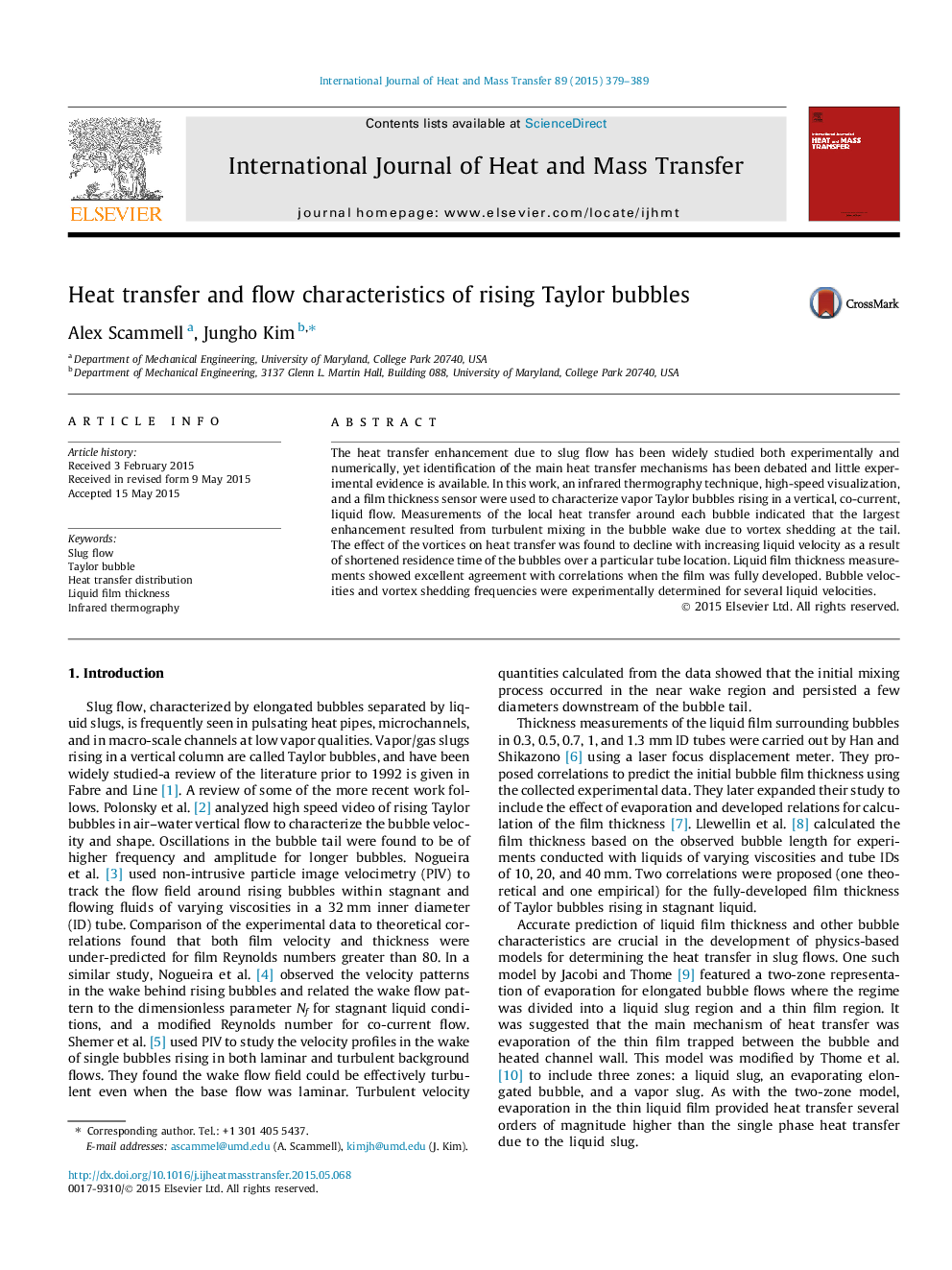| Article ID | Journal | Published Year | Pages | File Type |
|---|---|---|---|---|
| 7056569 | International Journal of Heat and Mass Transfer | 2015 | 11 Pages |
Abstract
The heat transfer enhancement due to slug flow has been widely studied both experimentally and numerically, yet identification of the main heat transfer mechanisms has been debated and little experimental evidence is available. In this work, an infrared thermography technique, high-speed visualization, and a film thickness sensor were used to characterize vapor Taylor bubbles rising in a vertical, co-current, liquid flow. Measurements of the local heat transfer around each bubble indicated that the largest enhancement resulted from turbulent mixing in the bubble wake due to vortex shedding at the tail. The effect of the vortices on heat transfer was found to decline with increasing liquid velocity as a result of shortened residence time of the bubbles over a particular tube location. Liquid film thickness measurements showed excellent agreement with correlations when the film was fully developed. Bubble velocities and vortex shedding frequencies were experimentally determined for several liquid velocities.
Related Topics
Physical Sciences and Engineering
Chemical Engineering
Fluid Flow and Transfer Processes
Authors
Alex Scammell, Jungho Kim,
